The Franciscan sanctuary of La Verna.
2021
The Franciscan sanctuary of La Verna (province of Arezzo) is famous for being the place where St. Francis of Assisi received the stigmata on September 16, 1224.
You may also like

2021
San Gimignano. Glimpses of historic center
San Gimignano is an Italian town of 7 447 inhabitants in the province of Siena in Tuscany. For the characteristic medieval architecture of its historic center it has been declared a World Heritage Site by UNESCO. The site of San Gimignano, despite some nineteenth-twentieth-century restorations, is mostly intact in its thirteenth-fourteenth century appearance and is one of the best examples in Europe of urban organization of the municipal age. Granted by Royal Decree of 29 April 1936, San Gimignano boasts the title of city San Gimignano stands on a place certainly inhabited by the Etruscans, at least from the third century BC. The hill was chosen for strategic reasons, being dominant (324 m a.s.l.) over the high Val d'Elsa. On the slopes of Poggio del Comune (624 m a.s.l.) there are the ruins of Castelvecchio, a village from the Lombard period. The first mention dates back to 929. In the Middle Ages the city was located on one of the routes of the Via Francigena, which Sigeric, archbishop of Canterbury, traveled between 990 and 994 and which for him represented the 19th stage (Mansio) of his itinerary return from Rome to England. Sigeric named it Sancte Gemiane, also indicating the village as a point of intersection with the road between Pisa and Siena. According to tradition, the name derives from the holy bishop of Modena, who defended the village from the occupation of Attila. The first city walls dates back to 998 and included the hill of Montestaffoli, where there was already a fortress seat of the market owned by the bishop of Volterra, and the poggio della Torre with the bishop's castle.
2021
Lucca, Tuscany. The church of San Giusto
The church of San Giusto is a church in Lucca located in the square of the same name. The current building, built on a previous one, dates back to the second half of the 12th century.
2021
Lucca, Tuscany. The church of San Cristoforo
The church of San Cristoforo is a church of Lucca in Tuscany located in via Fillungo. Built in the 11th century, it was rebuilt in the mid-12th century.
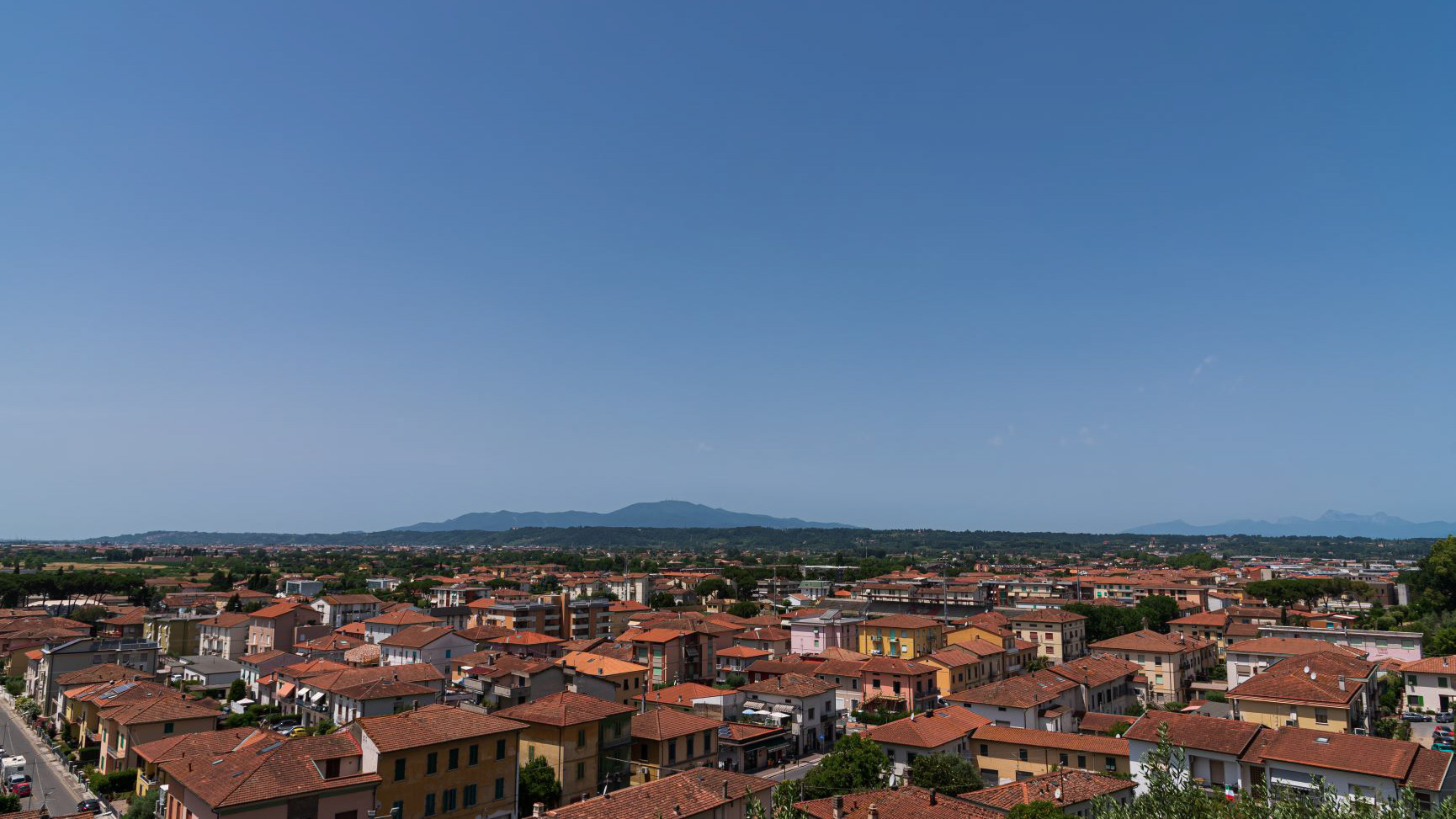
2021
Fucecchio. Panorama from the lookout of the city
Fucecchio is an Italian town of 23,076 inhabitants in the metropolitan city of Florence in Tuscany, in the lower Valdarno.
2021
San Gimignano. The church of Sant'Agostino
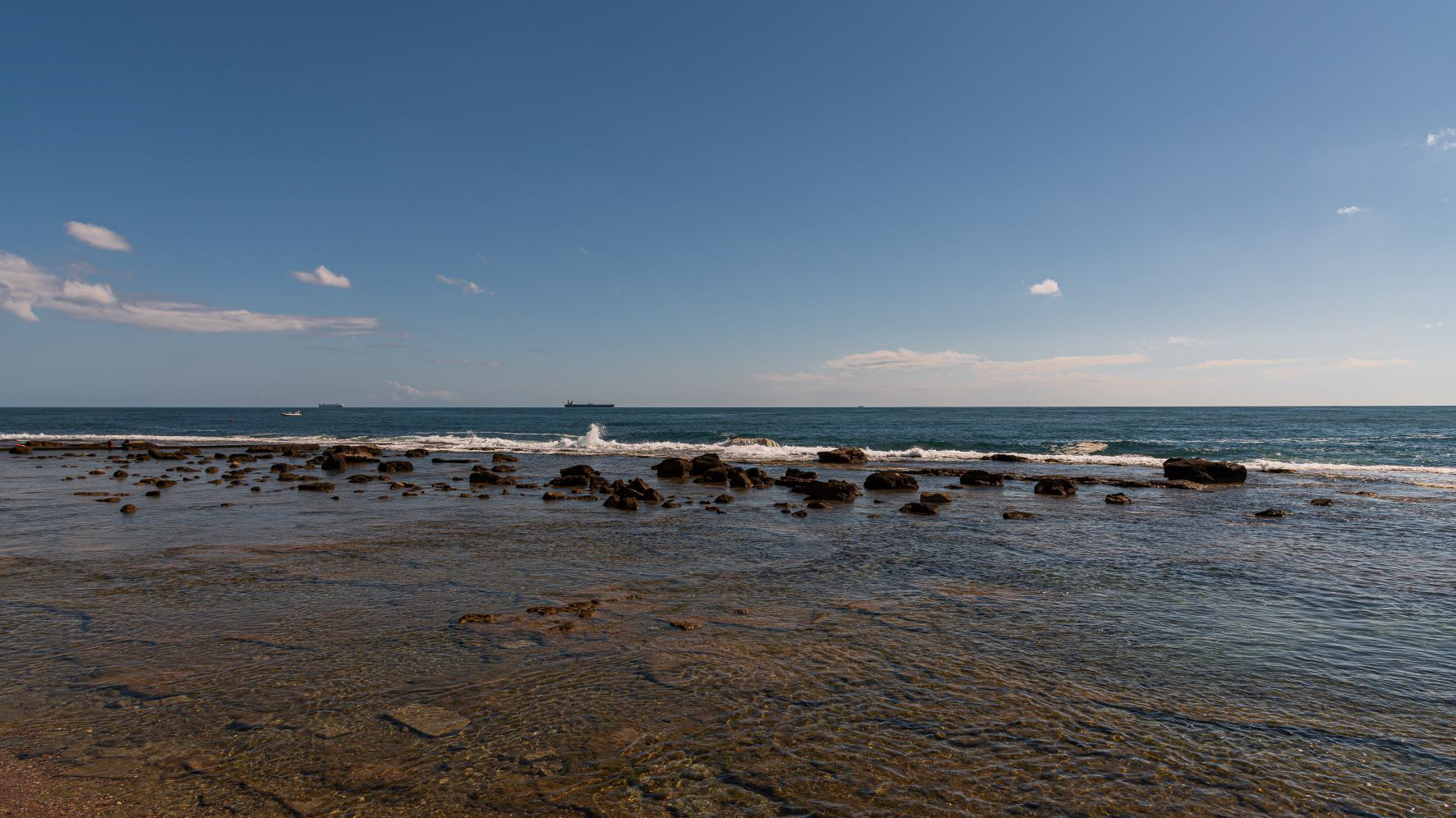
2021
Livorno
Livorno, Tuscany. The Livorno seafront. The Ligurian sea as seen from Terrazza Mascagni
The Livorno seafront is a promenade that winds for several kilometers along the coast of the Ligurian Sea, starting from the port area and ideally ending in the coastal stretch of the Romito.
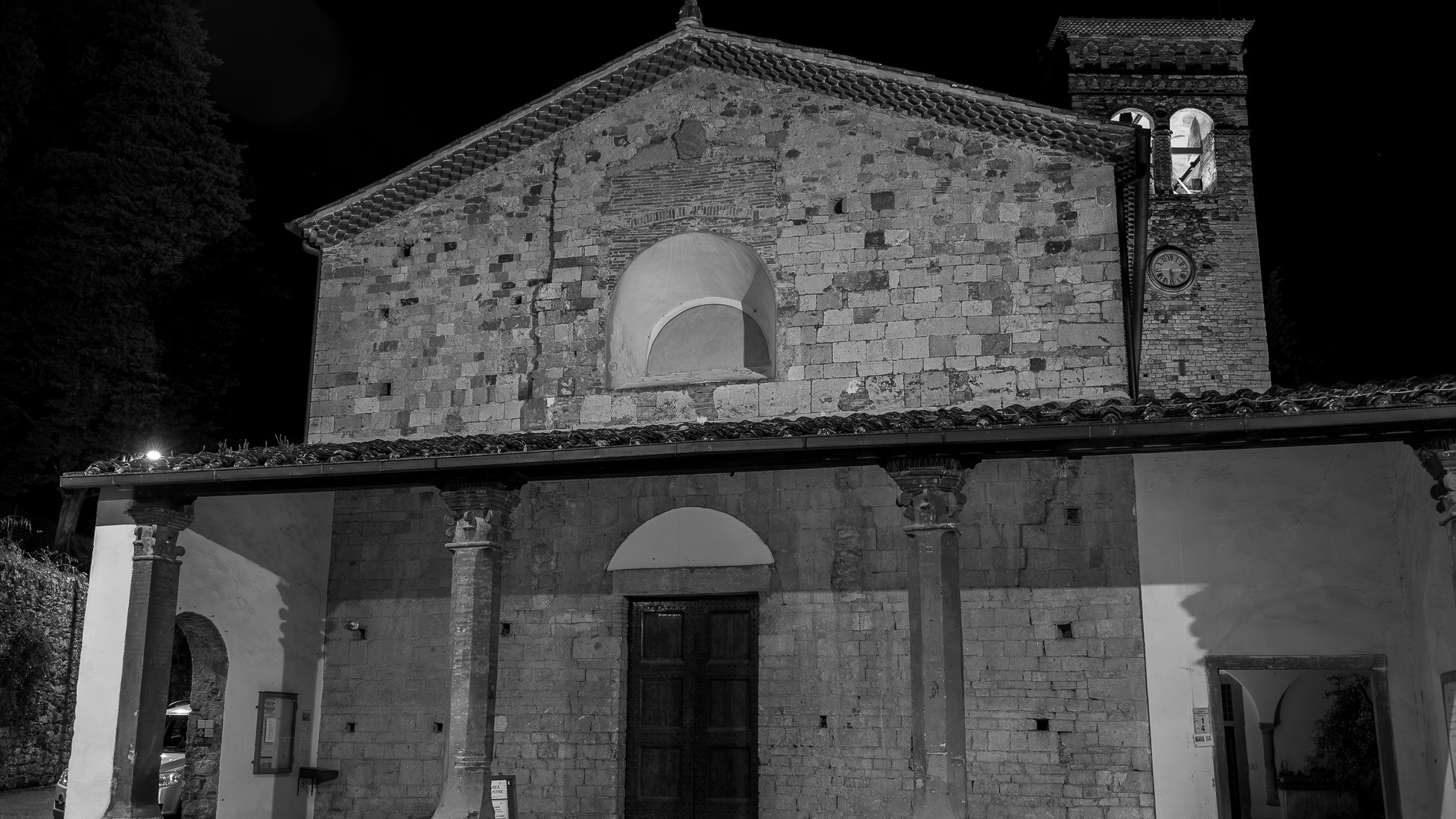
2023
Rocca di Montemurlo. Pieve di San Giovanni Decollato
The parish church of S. Giovanni Battista Decollato opens onto the square of the village. The parish church of Montemurlo has an ancient and controversial history, we find the first trace of it when Otto III, on the occasion of his coronation as emperor (995), descends to Italy for Rome and on his journey (998) confirms the possessions of Bishop Antonino of Pistoia among which our pieve is noted. It has a simple plan, with a single nave with presbytery and choir, modified in the second half of the last century. Originally the parish church had very small dimensions and it was only during the 16th century that we witness the first expansion works carried out by the humanist Bartolomeo Fonzio, parish priest in Montemurlo from 1494 to 1520, who had the rectory and the cloister built alongside the church, of which however, the round arches and columns with Corinthian capitals now walled up can still be traced. The parish church is 'protected' by an imposing bell tower which was originally a watchtower then transformed and refined, in the first half of the 16th century as part of the transformations carried out by the active parish priest, with the large mullioned windows that we see on each side, surmounted by brick arches. The large window is supported by octagonal columns and the shutters of the arches that conclude the tower are decorated with a notched frame that also surrounds the roof. Entering the church we cross a loggia, added during the 17th century, supported by brick columns with Ionic-inspired capitals. The interior of the church, with a goat-like roof, is enriched by four aedicule altars, one of which dates back to the 16th century, a model for the others built in the 18th century. On the altars and walls of the presbytery, valuable paintings by the painters Francesco Granacci, Giovanni Stradano, Matteo rosselli and Giacinto Fabroni.
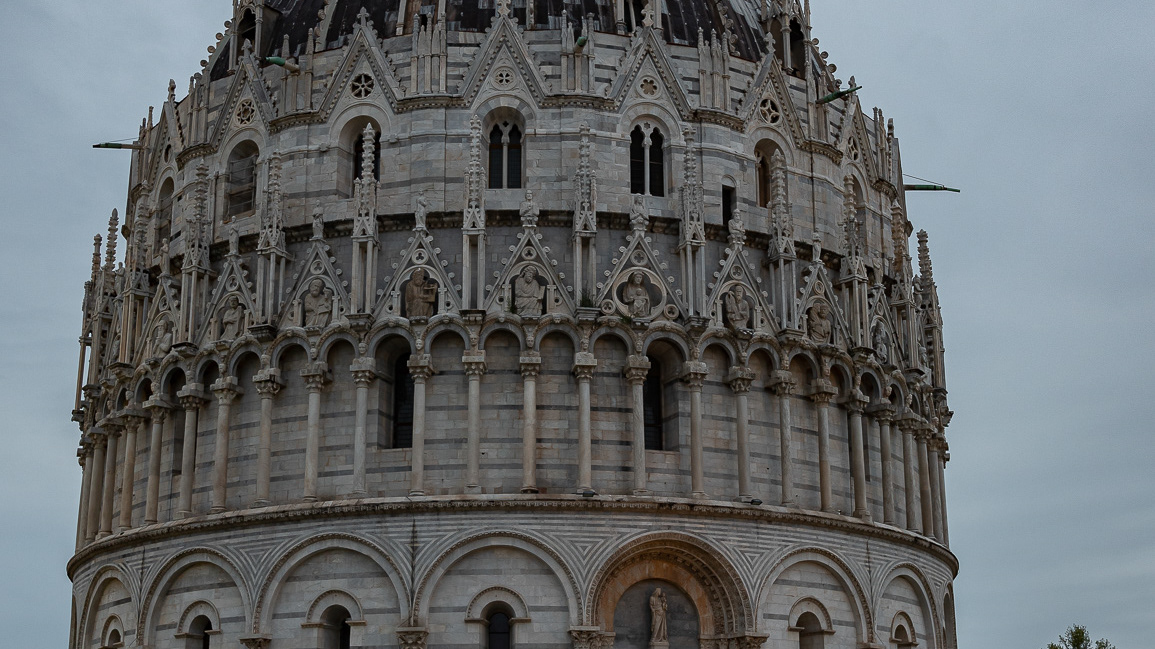
2021
Pisa, The baptistery of San Giovanni
the baptistery of San Giovanni is one of the monuments in the Piazza dei Miracoli, in Pisa; it rises in front of the western facade of the cathedral of Santa Maria Assunta, south of the monumental cemetery. It is the largest baptistery in Italy, and also in the world: its circumference measures 107.24 m, while the width of the masonry at the base is 263 cm (2 meters and 63 cm), for a height of 54 meters and 86 centimeters. The construction of the building began in the mid-twelfth century: "1153 mense Augusti fundata fuit haec ...", or "In the month of August 1153 it was founded ..." (1153 in the Pisan calendar corresponds to 1152). It replaces an earlier, smaller baptistery which was located north-east of the Cathedral, where the Camposanto is now located. It was built in Romanesque style by an architect who signed himself «Diotisalvi magister…» in a pillar inside the building. Later Nicola and Giovanni Pisano were also foremen of the yard, as well as Cellino di Nese. In the nineteenth century, at the same time as a renewal that affected the entire Piazza del Duomo and its monuments, the baptistery was subject to a radical restoration by the architect Alessandro Gherardesca, with interventions that led to the reconstruction of some portals and a large part of the decorative apparatus. Despite the denunciations of some intellectuals and prominent personalities of the Pisan culture of the time, such as Carlo Lasinio, the works, directed by the master builder Giovanni Storni, led to the removal of numerous sculptures by Nicola and Giovanni Pisano. The statues, placed at the top of the first order above and inside the vimpergas, were replaced with works that did not imitate the medieval taste, while the original sculptures were almost all lost except for those now exhibited at the Museo dell'Opera del Duomo. The intervention should have also extended inside, with the creation of frescoes in the central basin, but the project was not concretized and was essentially limited to the removal of non-medieval furnishings and the installation of new windows.

2021
Fucecchio. Franciscan Convent of the Virgin
It was built in the early seventeenth century. Instead of a small sixteenth-century oratory, a church and a convent were built, which in the mid-seventeenth century became a Franciscan.
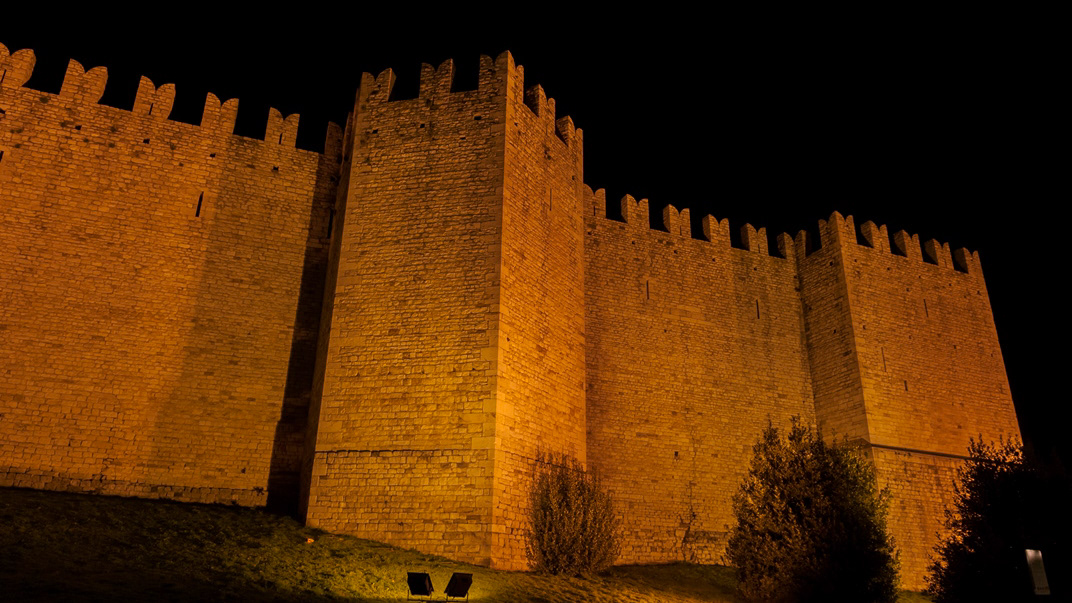
2008
Prato, Castle of the Emperor
The fort of the Alberti di Prato once stood on the site where the present castle is located, which was almost completely razed to the ground in 1107 during the siege of the troops of Matilde di Canossa; in its place another palace, called "Palazzolo", was rebuilt to house the nuncios of the emperors Arrigo VI of Svevia and Otto IV of Brunswick (of which two towers remain, those without battlements, which until 1767-68 had about the double the current height); the area affected by the Castle has always been strategic, so much so that there are documents dating back to 1035 which testify to the presence of an older "palatium"; this building was the nucleus of Castrum Prati, the village that stood upstream of the building which also possessed an ancient parish church (Santa Maria in Castello, which no longer exists). The commission for the construction was given by Frederick II to Riccardo da Lentini, probably starting from 1240. The castle, originally tangent to the second walls (XII century), was partially surrounded by a moat and connected to the Albertian prisons from which definition " of the prisons "the nearby Marian shrine took its name. It has eight towers and has inherent, as for the Castel del Monte, various symbolic aspects, both in the structure and in the portal. Once completed it should have been used as an important garrison of the empire, testifying to the presence of the emperor on the possessions of the north. However, its construction was interrupted around 1250, due to the premature death of the emperor, and the unfinished structure was later used for many other purposes. During the fourteenth century, under the Florentine dominion, the castle was connected to the third circle of walls by a covered corridor called "Corridore del Cassero" (ie: corridor of the castle) or more simply Cassero. In this way the Florentine troops could easily enter the city from outside the walls using a protected passage.
